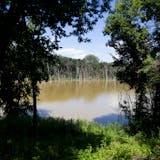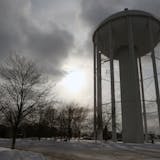The Book of Science and Antiquities
By Thomas Keneally. (Atria, 289 pages, $28.)
Australian writer Thomas Keneally can be a hard sell. Brilliant, visionary and astoundingly prolific, he has written such bestsellers as "Schindler's List" and "The Daughters of Mars," as well as more than 40 other books, mostly novels, that showcase his mastery of modern science and world history and his richly layered, character-driven storytelling.
But reading Keneally requires the kind of respect and attention one often associates with classic novels of yesteryear. His stories are dense and complex. I have devoured some of them in a couple of sittings only to be told by friends that they couldn't make it through the first chapter. Keneally's latest novel, inexplicably burdened with the off-point title "The Book of Science and Antiquities," will not be a big hit, but if you like Keneally, you'll love it. It's a set of paired narratives — the first focused on Shelby Apple, an aging Australian filmmaker who becomes fascinated by Learned Man, a 40,000-year-old set of bones found in the Australian Outback, and the second told by Learned Man himself.
Both protagonists have led long lives, rich in adventure, tragedy and respectable doses of the pride and foolishness built into the human condition. Both tell their stories in the shadow of looming death, which lends their narratives extra-poignant intensity. "All mothers want their issue to get along," Shelby observes. "All mothers have a uterine yearning for peace. But their children are quickly sundered from each other by mere concepts such as nation, ideology, culture."
Each of us is one of a kind, an unprecedented individual, and yet we are nothing, or very little, without community. That was true for ancient Learned Man and for modern Shelby. This is a rich and suspenseful read and a fine addition to Keneally's unmatched exploration via fiction of what it means to be human.
PAMELA MILLER
The Seine: The River That Made Paris
By Elaine Sciolino. (W.W. Norton & Co., 370 pages, $26.95.)
Tourists usually look up from the boats in Paris that carry them along the Seine, admiring Notre Dame Cathedral, the Eiffel Tower and the magnificent bridges. But if we looked down at the water, we would start to appreciate the source of all the grandeur above. "Without the Eiffel Tower, Paris would still exist; without the Seine, there never would have been a Paris," writes Elaine Sciolino, a longtime American in Paris.
Sciolino stumbled into Paris decades ago as a divorced young journalist with feeble French. She thanks the Seine for keeping her grounded as she rebuilt her life. But as the years passed, she came to realize that she knew very little about "the most romantic river in the world," outside its 8 miles in the city. The former Paris bureau chief for the New York Times set about fixing that, in the way of a journalist "seduced by a river." She takes us along in an engaging travelogue/memoir tracing the Seine's 483 miles from its source to the sea.
She squelches in the Seine where it bubbles to the surface near an ancient temple in Burgundy. She swims in it after it becomes a river (but before it becomes polluted). She cruises it with police and river pilots, and commiserates with frustrated preservationists.


